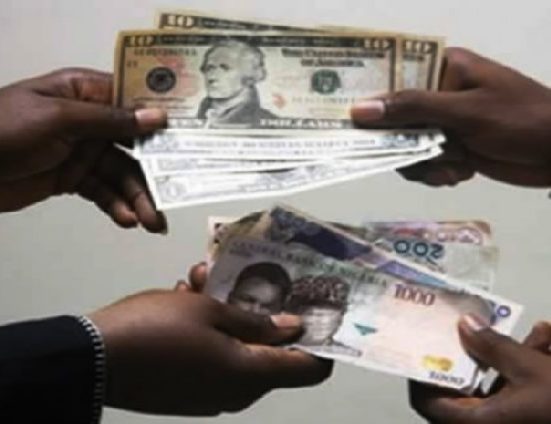The Nigerian naira is demonstrating a notable shift in its exchange rate trajectory, moving away from the dramatic declines that characterized 2024. While still facing pressures from a dominant U.S. dollar, the naira’s year-on-year depreciation has significantly moderated, offering a cautious glimmer of improved stability in comparison to many of its emerging market peers. This positive development comes as the Ghanaian cedis, for instance, continues to grapple with a stark 31.09% drop against the dollar over the past year (as of June 6, 2025).A recent global market report, titled “15 WORST CURRENCIES AGAINST THE US DOLLAR – 6 JUN 2025,” underscores the widespread currency weakness gripping developing economies. Beyond the Ghanaian cedi, other currencies such as the Thai baht and Russian ruble have also recorded substantial double-digit declines. The report also highlights the Indian rupee, Indonesian rupiah, Turkish lira, Mexican peso, Hungarian forint, South African rand, Philippine peso, Brazilian real, Kazakhstani tenge, Colombian peso, Pakistani rupee, and Malaysian ringgit, all contending with varying degrees of depreciation.A Positive Turn for the NairaFor Nigerians, this signals a significant improvement from the turbulent waters of 2024. To put it in perspective, the naira, which saw its value drop by as much as 129% within 2024 alone, with an average exchange rate of ₦1,479 to the US dollar, is now experiencing a much slower rate of decline. Between April 2024 and April 2025, the naira’s depreciation against the U.S. dollar stands at approximately 21.81% based on official exchange rates.This distinct moderation indicates that while the naira continues to adjust, the speed of its fall has been considerably reined in. Think of it like a vehicle descending a steep hill: in 2024, it was freefalling, but now, it appears the brakes are being effectively applied. This suggests that recent policy interventions and economic shifts are beginning to have a tangible impact, even if the road ahead remains challenging. As of early June 2025, the naira is currently trading around ₦1,584 to the dollar, reflecting this more controlled adjustment.Understanding the Currency DynamicsThe forces at play in the global currency markets, and how they impact the naira, are multifaceted:Emerging Market Headwinds: Currencies like the naira are inherently vulnerable to internal structural weaknesses. This includes ongoing inflationary pressures, which erode the purchasing power of the currency, alongside fluctuations in foreign exchange reserves. The latter is heavily influenced by oil price volatility and Nigeria’s oil production levels. A persistent imbalance where the demand for foreign currency outstrips its supply creates a foundational pressure. Additionally, fiscal deficits (when government spending exceeds revenue) and rising public debt often necessitate external borrowing, further impacting currency stability.Persistent U.S. Dollar Strength: The U.S. dollar remains a dominant force globally, significantly influenced by the U.S. Federal Reserve’s monetary policy. When the Fed maintains higher interest rates, it makes dollar-denominated assets more attractive, leading to capital flows out of riskier emerging markets and into the U.S. This capital movement naturally weakens local currencies. While some market views may suggest a weakening dollar, the actual flow of capital means emerging markets like Nigeria continue to feel this gravitational pull towards the greenback. The key here is that the naira’s current, less severe depreciation rate suggests a more robust absorption of these external shocks compared to the previous year, potentially due to more assertive monetary policy adjustments by the Central Bank of Nigeria (CBN).Potent Local Interventions and Reforms: Domestic policy choices play a paramount role. For currencies like the cedi and Turkish lira, country-specific factors, including previous policy missteps and high inflation, have exacerbated their declines. In Nigeria’s case, the shift towards a more market-reflective exchange rate and the CBN’s aggressive interest rate hikes are appearing to be crucial in moderating the depreciation rate. These measures aim to curb inflation and attract foreign portfolio investment, bolstering dollar inflows. However, Nigeria’s import dependency continues to generate a structural demand for dollars, emphasizing the need for continued efforts in improving oil production and diversifying non-oil exports to ensure a sustainable supply of foreign exchange.In essence, while the Nigerian economy and its currency are still navigating complex terrain, the significant reduction in the annual depreciation rate, particularly when contrasted with 2024’s dramatic figures and the ongoing struggles of other emerging market currencies like the Ghanaian cedi, signals a cautious improvement in stability. The path forward will undoubtedly require continued fiscal prudence, a robust monetary policy, and dedicated efforts to boost dollar inflows through diversified economic activities.
Editorial
Naira’s Resilience: Moderated Depreciation Signals Shift from 2024’s Turbulence
- by Balogun Monsurudeen.F.
- June 10, 2025
- 0 Comments
- 3 minutes read
- 305 Views
- 3 months ago


